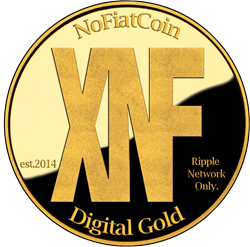Gold Backed Alt Coin Jumps 50% in One Week
 A new alt coin backed by precious metals saw its price jump by almost 50% in one week of trading, proving significant early interest from investors and supporters of digital currency.
A new alt coin backed by precious metals saw its price jump by almost 50% in one week of trading, proving significant early interest from investors and supporters of digital currency.
The NoFiatCoin started trading on the Ripple network on January 6th 2014, and has already seen its value rise to over $2. As an alternative to Bitcoin, the trailblazer which first established that there is a market for math-based digital currencies, the NoFiatCoin (currency code: NFX) is designed to appeal to people with an ideological opposition to ‘fiat money’ and central banking. Its launch on the Ripple network, which is championing the potential of digital currency to establish a new, decentralized, peer to peer banking and financial services industry is no coincidence, as the team behind the coin share many of the ideals of the growing Ripple community.
But it is the precious metals backing of the new coin which is garnering the most attention. NFX is backed by, and can be redeemed for, gold and silver held in vaults around the world. It can also be bought using precious metals through the same vaults. This is the first time that a digital currency has been backed by something with real world value, and the idea causing something of a stir across the internet.
You can find out more and get the latest price here.